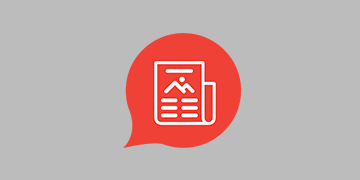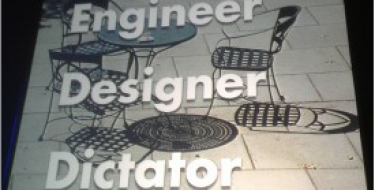Diagnosing (and Treating) Bad Design
There is something very obvious about an ugly website. It doesn't take a web professional to spot a site that took a dive off the ugly tree and hit every branch on the way down.
It doesn't take long, either. Most people will decide if they like your website in less than 10 seconds. Granted, design is subjective, but there are some tell-tale symptoms that you've got bad web design. Here's a list:
Typography
Typography is easy to botch. Lines of text that stretch across the entire page, blue text on a black background, 15 different fonts on one page—we see it all too often.
Text is meant to be read, so give it room to breathe—a little white space never hurt anybody. Also, provide the reader with good contrast between text and background. And, a rule of thumb—three font choices is plenty for any website.
One of the most-common complaints about typography is size. Everybody wants the text to be bigger—everyone over the age of 40, that is. I'm all for increasing the text size on any of my designs, if the client asks me to. Otherwise, put on your glasses, old people! Just kidding. But seriously.
Color
A terrible color palette is easy to spot but, interestingly enough, very hard to create. You have to try really hard to put together a bad color scheme. Here's a tip: If you think your site has bad color, it does. And if you're among the color-impaired, search for "color scheme" and you'll find a handful of color-scheme generators that will hold your hand.
Architecture
My pappy has an Internet routine that maybe you can relate to. He gets on, he gets lost, he gets ticked, and he gets off. Rinse and repeat. However, something tells me it's not always user error.
A site that is hard to navigate is as bad as it gets, in my opinion. Visual design aside, if your user can't find what they need, they'll leave, pappy included. Another rule of thumb—it should take a user no more than two clicks to find what they seek.
Imagery
Pictures are powerful. Beautiful imagery can take good design to the next level. Some of the best site designs I come across are photographers' websites, chock full of stunning photography.
On the other hand, poor imagery can hurt. Stock photography is a great thing, but the wrong choice can look cheesy, and the user will pick up on it. Take the time to choose imagery that is relevant and works nicely into the site design.
Movement
Unless you've got a really good reason for it, nothing on your site should dance—dance, spin, blink, or hop, for that matter. It's common to hear a client ask that something move to draw attention and make the design feel modern. However, too much movement, without purpose, can be distracting.
Movement should have purpose. Take, for example, the Digett home page. By using a slideshow effect, we can transition through several of our case studies in a small amount of space. Movement with purpose, you see.
The Browser Test
Does your site look perfect in all major web browsers? Before you answer, raise your hand if you didn't know there is more than one web browser. Okay, now raise your hand if you don't know what a web browser is.
For example, Internet Explorer is a web browser, the most-widely used, as a matter of fact. However, there are many other browsers in use, and each of them can make your site look a little different.
At Digett, we "browser test" for seven major web browsers, including Internet Explorer, Safari, and Firefox. This ensures that what you see is what the rest of the world sees.
Load Time
People are impatient, more so today than ever before. Like a herd of bulls in a china closet, people don't have time to wait on your site to load. If your website takes more than a few seconds to show up, they move on and you lose business.
Any home page should focus more on quality than quantity. It serves to get the user interested and drive them further into the site, where the goods are. A "less-is-more" approach to your home page design will certainly speed up the loading process and keep your user's attention.
Treatment
If you've got these, or any other symptoms of bad web design, please ask your doctor about good web design—I've heard good things about Dr. Drupal.
Side effects may include effective typography, an attractive color palette, sensible architecture, beautiful imagery, movement with purpose, quality assurance, and faster load times.
MONTHLY MARKETING INSIGHTS.
Get thought-provoking and actionable insights to improve how your firm makes a connection with your customers.





LEAVE A COMMENT